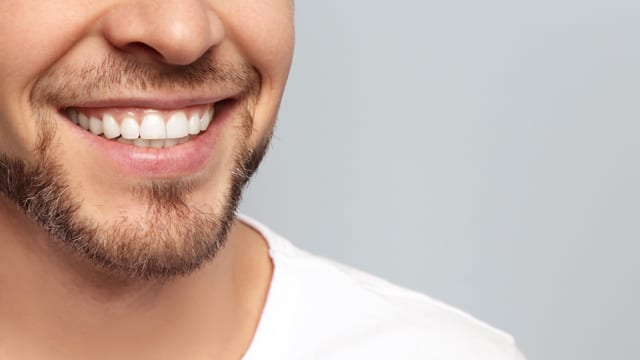Why Is It Called a Canine Tooth?
These teeth get their unique name for their fang-like appearance that resembles those of a canine (another name a dog). Dogs are known for showing their fangs when they feel threatened, so these distinctive teeth have come to be associated with canines. In humans, the canine teeth are located outside your incisors and are also known as your cuspids.
Because we are mammals, just like dogs, we share a common ancestor. If we trace our lineage back far enough through time, all mammals share a single descendant, though it’s difficult to know exactly when canine teeth were evolved. According to Ask An Anthropologist, they’re a trait we share with all hominins, our ancestors from over seven million years ago.
Our canines have grown smaller over generations, probably because we have used them less for fighting over time. Tools likely made it less appealing to use our teeth to get up close and personal with our prey, rivals, and environment. You can still notice this occurring today as you’re probably more liable to cut food into small portions or cook it into soft bites instead of chewing large, rough pieces.
When Do Canine Teeth Appear in the Mouth?
While our canine teeth are less distinctive or pointy than those of some other mammals, their form and function are much the same. It should still be easy to take out your mirror and identify your four (one set on the top, one on the bottom) canine teeth by their relatively long and sharp appearance.
Your canine teeth erupt in your mouth once when your baby teeth come in and once with your adult teeth. According to the American Dental Association, these are generally the third type of teeth to erupt, after your incisors and first molars.
You can expect canine teeth to erupt at different times for upper and lower pairs:
- Baby canine teeth (upper): Usually erupt between 16-22 months old and are shed between 10-12 years old.
- Baby canine teeth (lower): Usually erupt between 17-23 months old and are shed between 9-12 years old.
- Adult canine teeth (upper): Typically erupt between 11-12 years old.
- Adult canine teeth (lower): Typically erupt between 9-10 years old.
The Function of Your Canine Teeth
What are canine teeth used for? These unique teeth are vital for eating, speaking, and supporting the structure of your mouth. When teeth are lost or weakened, it can change or misalign your bite.
According to the ACI Medical and Dental School, canines are vital in eating to tear and rip apart food when chewing. Additionally, their location in your mouth and long shape helps guide your bite into the proper position.
Fun fact: Canine teeth are typically the largest teeth in humans.
Canine Teeth and Gum Recession
It’s important to take care of all your teeth to preserve your appearance and your mouth's overall health. Canines may be especially deserving of your attention due to their prominent placement in your mouth. According to the Dental Press Journal of Orthodontics, your canines are among the most common places for recession from overly hard brushing or gum disease to occur.
Some tips that may help reduce gum recession include:
- Brush gently for two minutes twice daily using a soft-bristled toothbrush
- Clean between your teeth gently once a day using a flossing device or interdental cleaner
- Avoid smoking and tobacco products
- Take steps to prevent gum disease
- Consult with your medical professional to ensure you’re properly controlling medical conditions like diabetes
- Schedule visits with your dentist or dental hygienist at least twice a year
You now understand that canine teeth are unique not only in their appearance but also in their function and evolutionary history. Caring for all your teeth is vital not just for your appearance but for your dental health; canines are no exception. Be sure to brush gently and visit your dental professional regularly to avoid problems and keep your smile in top shape.
Oral Care Center articles are reviewed by an oral health medical professional. This information is for educational purposes only. This content is not intended to be a substitute for professional medical advice, diagnosis or treatment. Always seek the advice of your dentist, physician or other qualified healthcare provider.
ORAL HEALTH QUIZ
What's behind your smile?
Take our Oral Health assessment to get the most from your oral care routine
ORAL HEALTH QUIZ
What's behind your smile?
Take our Oral Health assessment to get the most from your oral care routine















